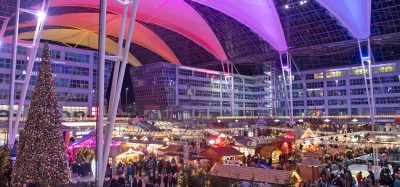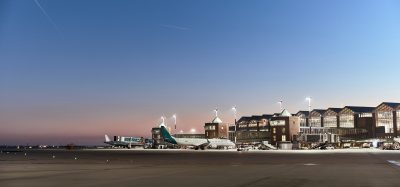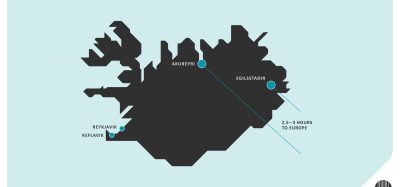Keeping the airport moving during winter
Posted: 16 November 2016 | Dan Meincke, Director of Traffic and Airside Operations, Copenhagen Airport | No comments yet
With more than 26 million passengers travelling through annually, Copenhagen has a duty to ensure its passengers can reach their destinations in all weather conditions. Dan Meincke reveals how a first class snow alert crew and cross-functional collaboration ensures on-time best performance…
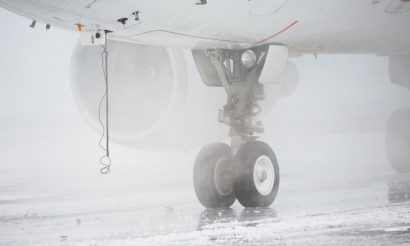

With more than 26 million passengers travelling through annually, Copenhagen Airport (CPH) has a duty to ensure its passengers can reach their destinations in all weather conditions. Director of Traffic and Airside Operations, Dan Meincke, reveals how a first class snow alert crew and cross-functional collaboration ensures on-time best performance.
The area that requires snow clearing at CPH is complex and includes 361,000m2 of runway, 1,200,000m2 of taxiways, an apron spanning 550,000m2 and a landside area of 400,000m2. To ensure the most efficient snow clearing possible, CPH has a world-class snow alert crew that can be mobilised quickly and proficiently depending on the intensity of the snowfall.
The snow alert crew comprises CPH employees from the following departments:
Free webinar – The future of asset management in global aviation
15 January, 2026, 02:00PM GMT
Join this virtual panel to hear from some of the AtkinsRéalis and aviation sector experts as we discuss how asset management is changing and the impact it will have on the future operations of airports throughout the world.
- 88 maintenance employees
- 8 team leaders
- 5 snow ‘bailiffs’
- 14 auto mechanics and four foremen
- 136 supporters (rotational off work employees who can work overtime) covering fire and rescue, bus service and marshals, baggage service and baggage hall.
As the employees already perform other duties on and around the airport premises they are familiar with the airport. All involved employees are given annual snow handling training to ensure the entire snow alert crew is well informed and prepared, prior to any potential snowfall. The crew is active from 15 November to 15 April and all 238 trained employees may be called on duty in turns – that is, 50 employees on duty per hour during a four-day period.
CPH determines the number of employees required depending on the intensity of the snowfall. It is estimated that approximately 50 employees are needed for a blizzard and 30 for ‘normal’ snowfall. There are therefore sufficient resources for four to five days of complete snow clearing at CPH and this number is continuously updated. CPH is aware of the need to make optimum use of its resources; hence they are allocated depending on the actual need, in case snowfall lasts several days.
Training the snow alert crew
Establishing a robust snow alert crew is hard work. At CPH the driving forces are commitment, will and the motivation to succeed. Everyone is aware of just how important it is to have an airport that is clear of ice and snow. At CPH there is an annual snow clearing refresher course during September and November and the airport hosts simultaneous refresher courses for external business partners, such as air traffic controller Naviair and handlers Aviator, Menzies Aviation, SAS Ground Handling (SGH) and Copenhagen Flight Service (CFS). The courses are conducted by CPH and its employees from the maintenance department put it into practice, since they have comprehensive experience with snow clearing.
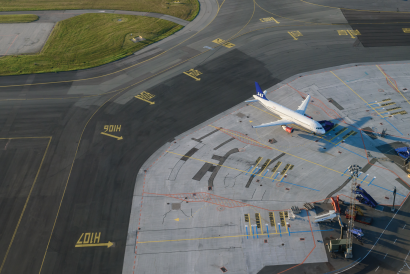

Cross-functional collaboration gives on-time best performance
Snow clearing is a complex matter at CPH and, as such, collaboration across departments and business partners is key to success. The airport focuses on collaboration and inclusion of all parties ensuring that everyone involved has practical knowledge of the process from preparation to execution. As part of this exercise, the airport invited the air traffic control (ATC) team to observe the snow clearing in practice. This gave the ATC team better insight and they have subsequently reciprocated, inviting the snow alert crew to visit the ATC tower.
To promote further collaboration there is also an annual handler meeting at the Danish trade union 3F, which all related handling parties attend alongside representatives from fuelling (BLK) and aircraft cleaning (Sodexo). There is also an annual planning meeting in September regarding The Local Snow Plan (Den Lokale Sneplan), where all involved parties are represented, as well as CPH. Here, new possible focus areas for the upcoming snow season are addressed. The Local Snow Plan is published on the CPH website in English and Danish and everybody is obligated to be acquainted with the plan.
Snow prediction
Snow clearing management requires the best possible predictions of weather conditions. CPH has its own command centre at maintenance, which is manned 24 hours a day. The staff have several years of experience with the systems and with analysing its output, hence they function as CPH’s own weather forecaster. To strengthen the weather predictions CPH is also affiliated with two external weather forecast institutes: the Danish Meteorological Institute and Metro Group. Seven employees have access to the Ice Warning System, which consists of 27 sensors located in the ground surface all over the airport, ascertaining the type of precipitation and measuring the temperature of the roads. This system gives an indication of the weather conditions and, in the long term, will help to establish how resources are best allocated, depending on the intensity of the snowfall.
Weather challenges
Despite the existence of adequate systems for predicting the weather, there can still be challenges with regard to this issue. When a low pressure area located over the sea – consisting of clouds, precipitation and strong winds – moves in over land, it can result in heavy snow fall over a short period of time; for example 20cm of snow in just a few hours. Since CPH is located near the Baltic Sea, a specific snow phenomenon can develop suddenly. Moreover, white frost can also be a challenge as moisture present on the surface can form ice, which results in slippery ground surfaces. Additionally, all runway lights on the manoeuvring area are LEDs which don’t emit heat, meaning ice and snow near runways do not melt as easily as they used to. Airports therefore need to be even more aware of white frost in order to adequately manage this challenge.
Execution of snow clearing
Snow clearing is a complex matter that demands close collaboration across fields. Furthermore, snow fall varies year by year – some years being very demanding and others providing very few snow clearing days (Figure 1). It is therefore vital that all equipment and employees are ready at all times. CPH uses a surface treatment on pavements called Aviform to ensure that ice and stuck snow can melt away.
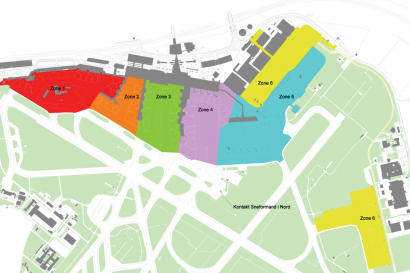

Fig 2
During snow clearing the apron is divided into six zones (Figure 2) which enables employees to coordinate, depending on where the need for snow clearing is most urgent. This zonation is vital and allows employees to become familiarised with the tasks associated with each zone and know exactly what their job is within the specific zone they are assigned. Both employees and equipment are assigned a specific zone, which ensures no time is wasted on long-distance logistics if an urgent situation emerges.
Climate change
In Denmark climate change manifests itself as more days with strong wind, rain and snow. Therefore, CPH has assessed the snow alert crew with relation to both heavy precipitation and snowfall. In general the airport experiences shorter periods of intense snowfall. This tendency has created a need for a better and more effective snow alert crew. CPH has invested in more employees and tractors, especially smaller tractors, which enable the airport to target snow clearing more precisely in each zone. Additionally, more support staff have been allocated internally to ensure customers, handlers and pilots that staff are present in high numbers and that taxiways and stands are cleared swiftly and effectively.
Snow clearing on manoeuvring area
Four years ago CPH invested in sweeping machines to enable the rapid clearing of runways and reduce time consumption from 35 to 12 minutes. This has resulted in a significant reduction in delayed flights, due to an overall ease of pressure and reduction of the wait for the de-icing areas. Therefore, as much as 60% more aircraft per hour take off during heavy snowfall.
Clearance of the runways is carried out using 15 Øvreaasen sweeper machines and two Oshkosh snow blowers. Simultaneously, a Sarsys friction tester is launched on to the runways to measure friction and two tractors ensure clearance of stop bars.
The runway is eight metres broader following the arrival of the A380, therefore to ensure it can still be cleared efficiently and in one go, two additional sweeper machines have been deployed. For ice clearing CPH has two Damman runway de-icing vehicles, which can apply Aviform in a width of 42 metres.
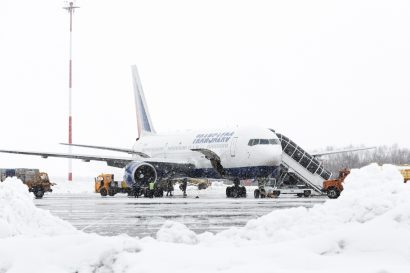

Snow clearing on the apron
The apron area is divided into zones and, depending on the intensity of the snowfall, there will be three to five tractors/employees in each zone who know their exact assignments. In total there can be up to 30 tractors present on the apron when carrying out the snow clearing. Moreover, there is a sweeper team consisting of three to four sweeper machines and two tractor shovels with snow ploughs. During the execution of snow clearing the apron, there is close collaboration with the Apron Tower to ensure that the process proceeds as effectively as possible.
Landside snow clearing
All parking areas are, of course, cleared as well. This is achieved via ongoing coordination among the snow clearing employees, who are informed of the areas in need of attention on Landside – i.e. the parking areas, among others.
Biography
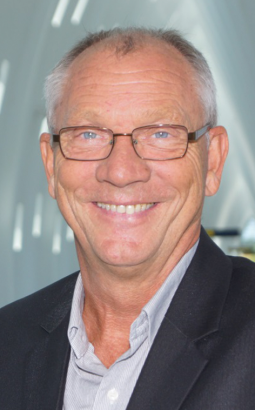

Stay Connected with International Airport Review — Subscribe for Free!
Get exclusive access to the latest airport and aviation industry insights from International Airport Review — tailored to your interests.
✅ Expert-Led Webinars – Gain insights from global aviation leaders
✅ Weekly News & Reports – Airport innovation, thought leadership, and industry trends
✅ Exclusive Industry Insights – Discover cutting-edge technologies shaping the future of air travel
✅ International Airport Summit – Join our flagship event to network with industry leaders and explore the latest advancements
Choose the updates that matter most to you.
Sign up now to stay informed, inspired, and connected — all for free!
Thank you for being part of our aviation community. Let’s keep shaping the future of airports together!



